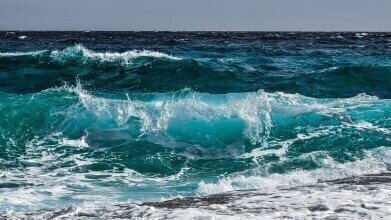Water/Wastewater
Why Do Viruses Matter in the Ocean?
May 16 2019
A new study has detected almost 200,000 types of virus floating in the world’s oceans, with more than a third of those (42%) located in the Arctic region. It’s the first time that so many different species of virus have been discovered in our waterways - a smaller, previous study uncovered less than 10 times that number - and the scientists behind it think they may have struck upon a discovery which could aid climate change calculations.
The viruses are believed to be responsible for eliminating approximately one fifth of all bacteria found in the ocean. Given that those bacteria often contain trace amounts of carbon, the viral effect means the carbon is not ingested by other animals and cannot infiltrate the food chain. Instead, it is released into the ocean, where it is eventually stored indefinitely. The authors of the study believe that this phenomenon has not been taken into account by climate scientists in the past and could provide an important insight into how oceans can prevent carbon in the atmosphere.
Viruses gone viral
The study, which involved more than 30 authors, was conducted between 2009 and 2013. In order to determine virus species and numbers, the researchers dropped tanks from their Tara sailboat to collect water samples. The experiment was repeated at 145 locations throughout the world and at depths ranging between 0 and 4,000m. They collected everything smaller than fish eggs, using high-performance measurement technology to filter the water and isolate the viruses, which were then compared to one another genetically.
The investigation revealed 195,728 different species of virus in the sample tanks, a staggering 12 times more than any previous study had discovered. The viruses could be separated into five global zones, known to be home to different strains of bacteria. The location with the most diversity among viral specimens was shallow, tropical and calm waters, where the temperatures and lack of movement allowed them to thrive. However, a close second was the Arctic region, causing some surprise among the study’s authors.
Bacteria killers
The good news is that almost all of the types of viruses discovered were bacteriophages - which means they attack bacteria, not humans. “So you can swim in the ocean and not worry about it,” reassured Ahmed Zayed, one of the study’s many authors. When the bacteria are neutralised by the viruses, the carbon stored within them is released back into the ocean. This is then consumed by various other microorganisms until finally, it reaches a state at which it can no longer be recycled and is simply stored indefinitely in the ocean.
However, the study’s authors were well aware of its limitations. For starters, they were only able to concentrate on species of virus with DNA (as opposed to RNA), despite the fact that the latter is believed to make up at least half of the ocean’s diversity. Secondly, 145 test sites is a very small sample size and there remain huge parts of the ocean which are not being monitored. However, the encouraging work uncovered by the team could provide not only the basis of a hot topic for water monitoring, but for climate change simulations models as well.
Digital Edition
IET 34.2 March 2024
April 2024
Gas Detection - Biogas batch fermentation system for laboratory use with automatic gas analysis in real time Water/Wastewater - Upcycling sensors for sustainable nature management - Prist...
View all digital editions
Events
Apr 22 2024 Hannover, Germany
Apr 22 2024 Marrakech, Morroco
Apr 23 2024 Kuala Lumpur, Malaysia
Apr 23 2024 Kintex, South Korea
Apr 23 2024 Edmonton, AB, Canada


















